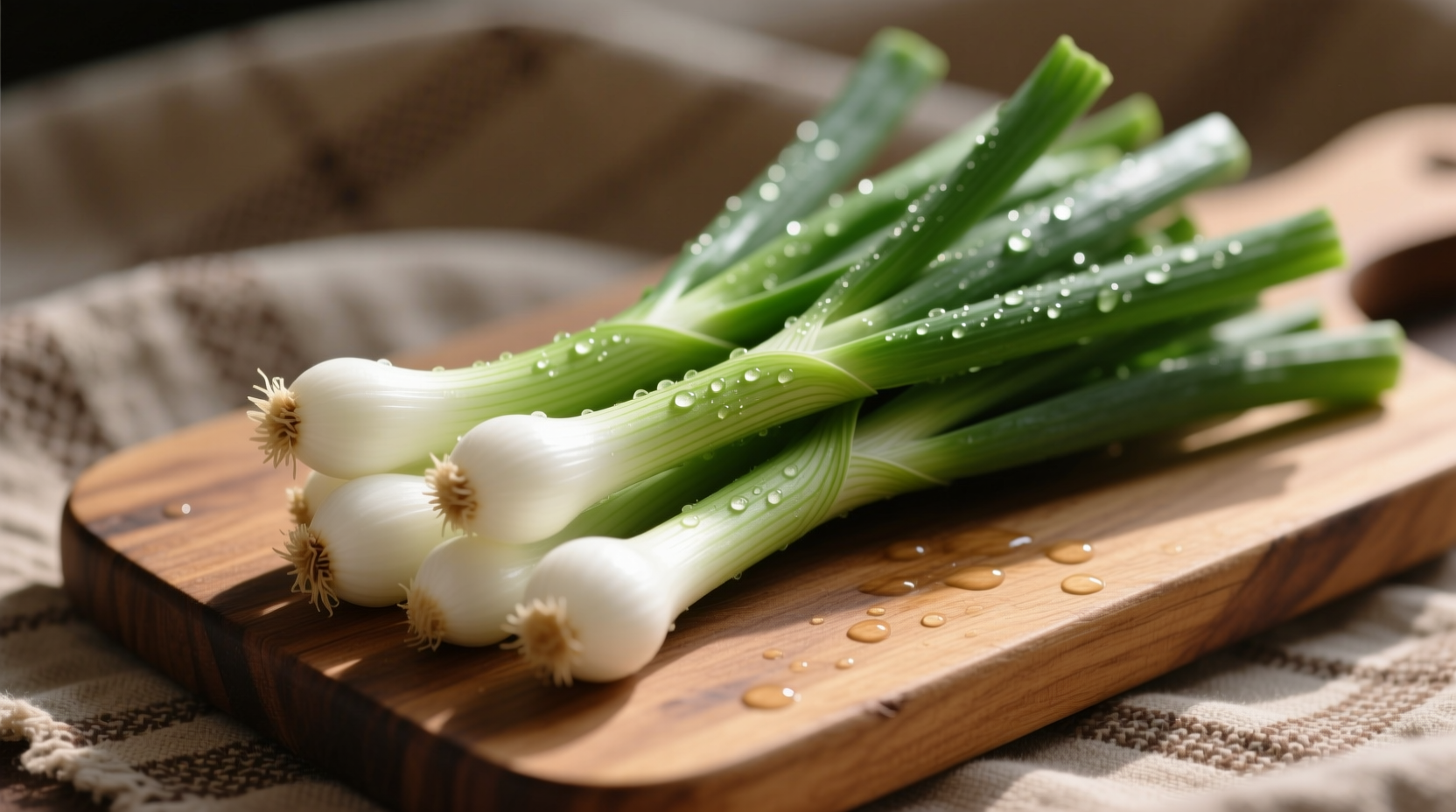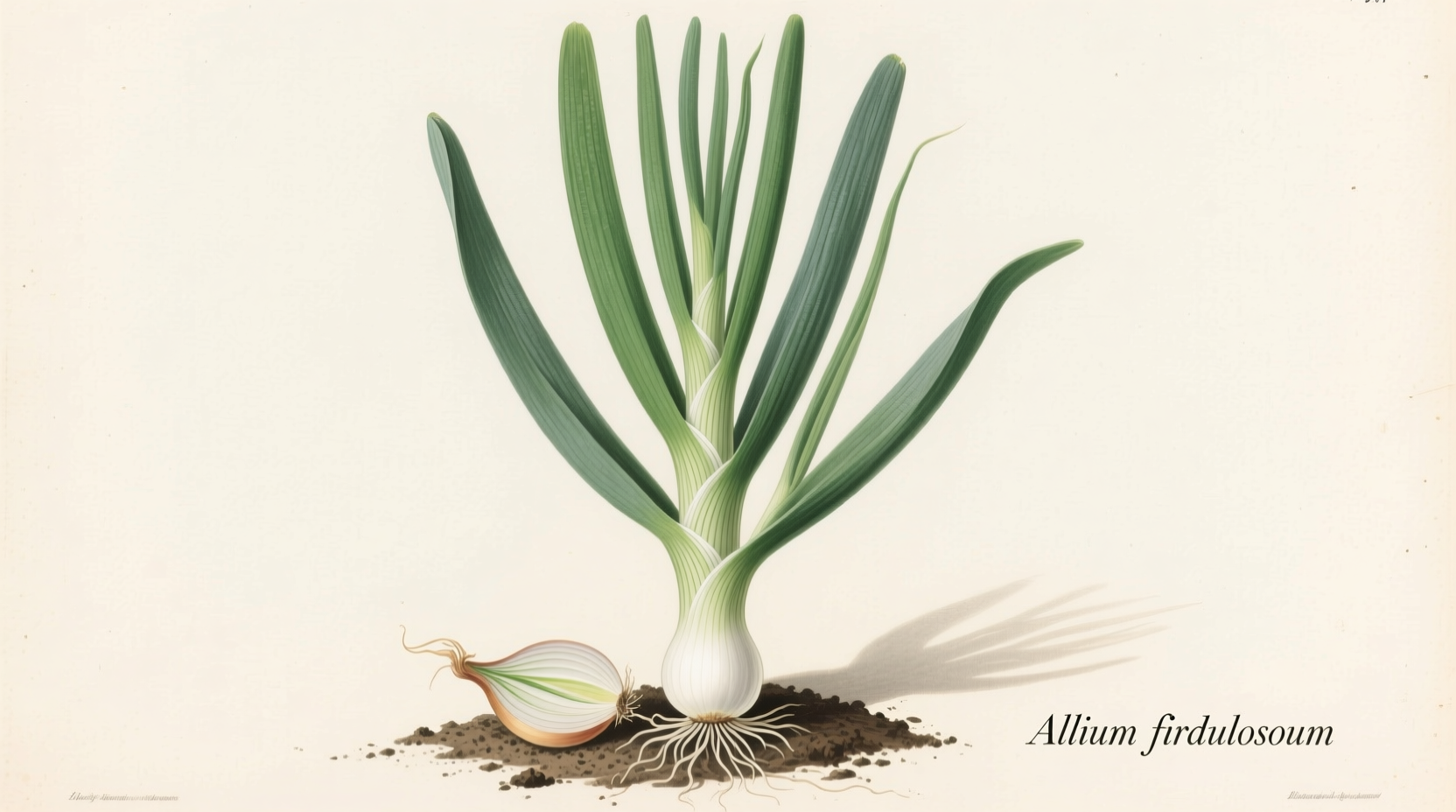Spotting Scallions at the Market: Your Visual Identification Guide
When selecting scallions, look for crisp, vibrant green tops with firm white bases. The entire plant is edible—from the delicate white root end to the slender green tips. Unlike mature onions that form large bulbs, scallions maintain a thin, cylindrical shape throughout their growth cycle. Their mild onion flavor makes them versatile for garnishing, stir-fries, salads, and dipping sauces without overwhelming other ingredients.

Scallion vs. Other Onion Varieties: Clearing the Confusion
Many shoppers confuse scallions with similar-looking alliums. This comparison table clarifies key differences based on USDA agricultural classifications and culinary usage patterns:
| Vegetable | Botanical Name | Flavor Profile | Edible Parts | Common Culinary Uses |
|---|---|---|---|---|
| Scallion/Green Onion | Allium fistulosum | Mild, fresh, slightly sweet | White base and green stalks | Garnishes, stir-fries, salads, soups |
| Spring Onion | Allium cepa var. aggregatum | Moderate, slightly sharper | Small bulb and green tops | Grilling, roasting, sautéing |
| Chives | Allium schoenoprasum | Delicate, grassy | Only green stalks | Garnishes, egg dishes, dips |
| Leek | Allium ampeloprasum | Sweet, mild when cooked | White and light green portions | Soups, stews, braises |
According to the USDA's Agricultural Research Service, the confusion between scallions and spring onions stems from regional naming differences rather than botanical distinctions. In many Asian markets, both terms refer to the same vegetable, while European markets often differentiate based on bulb size.
Why Chefs Reach for Scallions: Culinary Applications
Professional kitchens value scallions for their dual-texture profile and balanced flavor. The white portion provides subtle onion sharpness ideal for building flavor foundations in sautés, while the green tops offer fresh, grassy notes perfect for finishing dishes. When sliced thinly on a diagonal ("bias cut"), scallions create attractive garnishes that maintain structural integrity during cooking.
For maximum flavor impact, add white parts early in cooking processes and green parts in the final minute. This technique preserves the vibrant color and fresh taste of the greens while allowing the whites to mellow and sweeten. In Chinese cuisine, scallion oil—a simple infusion of sliced scallions in hot oil—forms the aromatic base for countless dishes.
Nutritional Benefits Backed by Science
Scallions pack impressive nutritional value despite their delicate appearance. Per 100g serving (approximately 10 medium scallions), USDA FoodData Central reports:
- Vitamin K: 207% of daily value (supports blood clotting and bone health)
- Vitamin C: 20% of daily value (antioxidant properties)
- Folate: 15% of daily value (essential for cell function)
- Only 32 calories with zero fat content
Research published in the Journal of Agricultural and Food Chemistry confirms that scallions contain higher concentrations of organosulfur compounds than mature onions—compounds associated with cardiovascular benefits and anti-inflammatory effects.
Smart Shopping and Storage Techniques
When purchasing scallions, select bunches with crisp, uniformly green stalks and firm white bases. Avoid any with yellowing tips or slimy spots. For optimal freshness:
- Refrigeration: Store upright in a glass of water (like flowers) with a plastic bag loosely covering the greens
- Long-term storage: Freeze chopped scallions in ice cube trays with water or oil for cooking applications
- Revival method: Soak limp scallions in ice water for 15 minutes to restore crispness
Unlike mature onions that last months in cool storage, scallions maintain peak quality for only 3-5 days refrigerated. Their high water content makes them particularly perishable but contributes to their fresh flavor profile.
Perfect Substitutions When Scallions Aren't Available
Ran out of scallions? These alternatives work in most recipes:
- Chives + yellow onion: Use 1 part finely minced yellow onion with 3 parts chives for balanced white/green ratio
- Shallot tops: The green portions of young shallots mimic scallion texture
- Leek greens: Use only the dark green parts, thinly sliced (milder flavor)
Remember that dried onion products won't replicate fresh scallion texture, and mature onions require longer cooking to mellow their sharper flavor. For raw applications like garnishes, nothing substitutes perfectly for fresh scallions' delicate crunch.
Global Variations in Scallion Usage
Culinary traditions worldwide showcase scallions' versatility. In Korean cuisine, scallion pancakes (pajeon) feature the entire vegetable in a savory batter. Japanese chefs create intricate negi garnishes by soaking sliced scallions in ice water to achieve perfect curl. Mexican cooks blend raw scallions into fresh salsas for subtle onion notes without overpowering heat.
According to ethnobotanical studies from the University of California, Davis, scallion usage patterns reveal fascinating cultural adaptations. While East Asian cuisines typically use both white and green parts equally, Western cooking often emphasizes the white portion for cooking and reserves greens for garnish—a practice shifting as global culinary techniques merge.











 浙公网安备
33010002000092号
浙公网安备
33010002000092号 浙B2-20120091-4
浙B2-20120091-4